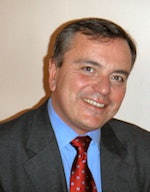
Aimed at ensuring patient safety and fairer reimbursement for doctors, the new "user guide" to the French government's 2010 telemedicine decree is due to be announced within the next few weeks. The national guidelines to be delivered to regional agencies will provide important details on practical aspects of key areas, including stroke, telemedicine in prisons, and teleradiology.
The text of the guidance for teleradiology will be in line with a two-year-old charter written by the "G4" professional college of radiology, composed of the French Society of Radiology (SFR); the union of public radiologists SRH (Syndicat des radiologues hospitaliers); the union of private radiologists FNMR (Fédération Nationale de Médecins Radiologues); and the national union for teachers of radiology CERF (Conseil des Enseignants en Radiologie de France). The charter, covering practice, ethics, payment, legal and technical quality assurance, and training, was the first of its kind for teleradiology in Europe, and was adopted last year by the European Society of Radiology (ESR).
 Teleradiology will be central to patient management this decade, according to ANTEL Vice President Dr. Jean-Philippe Masson, particularly in France's provinces, where problems related to a reduction in radiologists are likely to be felt first.
Teleradiology will be central to patient management this decade, according to ANTEL Vice President Dr. Jean-Philippe Masson, particularly in France's provinces, where problems related to a reduction in radiologists are likely to be felt first."France needed a charter for teleradiology to combat foreign telemedicine companies who were proposing teleradiology operations akin to call centers, in which quality was not assured," said Dr. Jean-Philippe Masson, vice president of France's telemedicine society, ANTEL. "Their prices undercut French teleradiologists, at levels not permitted by the French Medical Council (Conseil de L'Ordre), which dictates medical code."
The situation came to a head around two years ago because of a sharp influx into France of such companies based in places like Monaco, not registered with the Medical Council, and employing non-French radiologists. In terms of price, hospitals were paying up to three times less than the national rate for their teleradiology services, Masson explained.
Although these companies still exist, pressure from lobbyists such as ANTEL, and the appearance of the charter, means that many firms now employ French radiologists and also work in line with the Council's pricing. However, the Medical Council only has limited power over hospitals.
"It will need a heavier-handed approach from the French Ministry of Health to clamp down on companies offering rebates and hospitals seeking them," he explained.
Hope lies in the binding nature and specificity of the guidelines that will explain to regional health agencies how to organize, manage, and promote telemedicine and teleradiology, while ensuring regional compliance with the medical code and French law.
"It will cover contracts between companies and hospitals, payments, and the nationality of radiologists. Hospitals will be obliged to follow it," Masson said.
The importance of teleradiology is set to expand during the coming years for several reasons. The Ministry of Health predicts that by 2020 there will be 20% fewer radiologists in France. This means that in many small towns, public hospitals may not have any in-house radiologists, creating "medical deserts" and causing problems particularly for emergency patients. The breast cancer screening program may also be affected in terms of fewer screening centers and delays. Patients will also have to travel long distances for imaging tests.
It seems that some of these problems are already being felt. Carcassonne, where Masson has his own practice, has 18 private radiologists but only five in its hospital, which already creates difficulties in emergency situations.
Masson pointed to the benefits of telemedicine to be discussed at this year's ANTEL convention on 18 November. Not only is it developing for telemonitoring of chronic diseases such as diabetes, renal insufficiency, and heart disease, but also its potential for second opinion and speedy collaborative consultation for stroke pathology, for example, is rapidly growing. Importantly, teleradiology can reduce costs and increase comfort for patients who will not need to go to the hospital. France's crowded prisons will also benefit from such systems for monitoring patients, he said.
However, teleradiology must be considered the same as any medical act, according to the charter. Ethics and quality need to be ensured through patient consent, optimal interpretation performed on dedicated medical workstations by qualified radiologists, and reports written in French.
"We don't want 'ghost radiologists,' as has been the case sometimes in the U.S. If radiologists can organize themselves correctly, there won't be any need for telemedicine companies beyond their role of providing a useful technical infrastructure," Masson added.



















